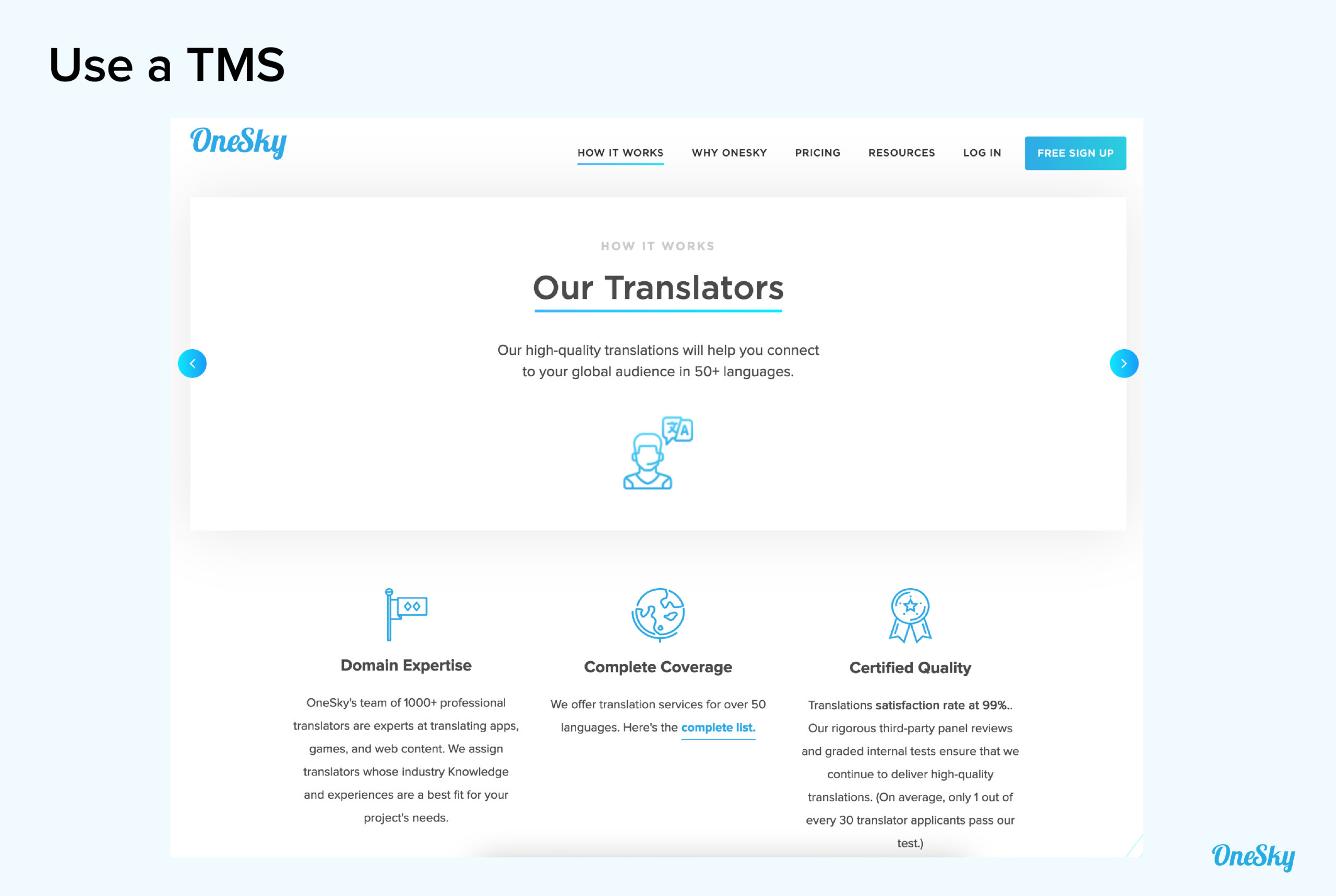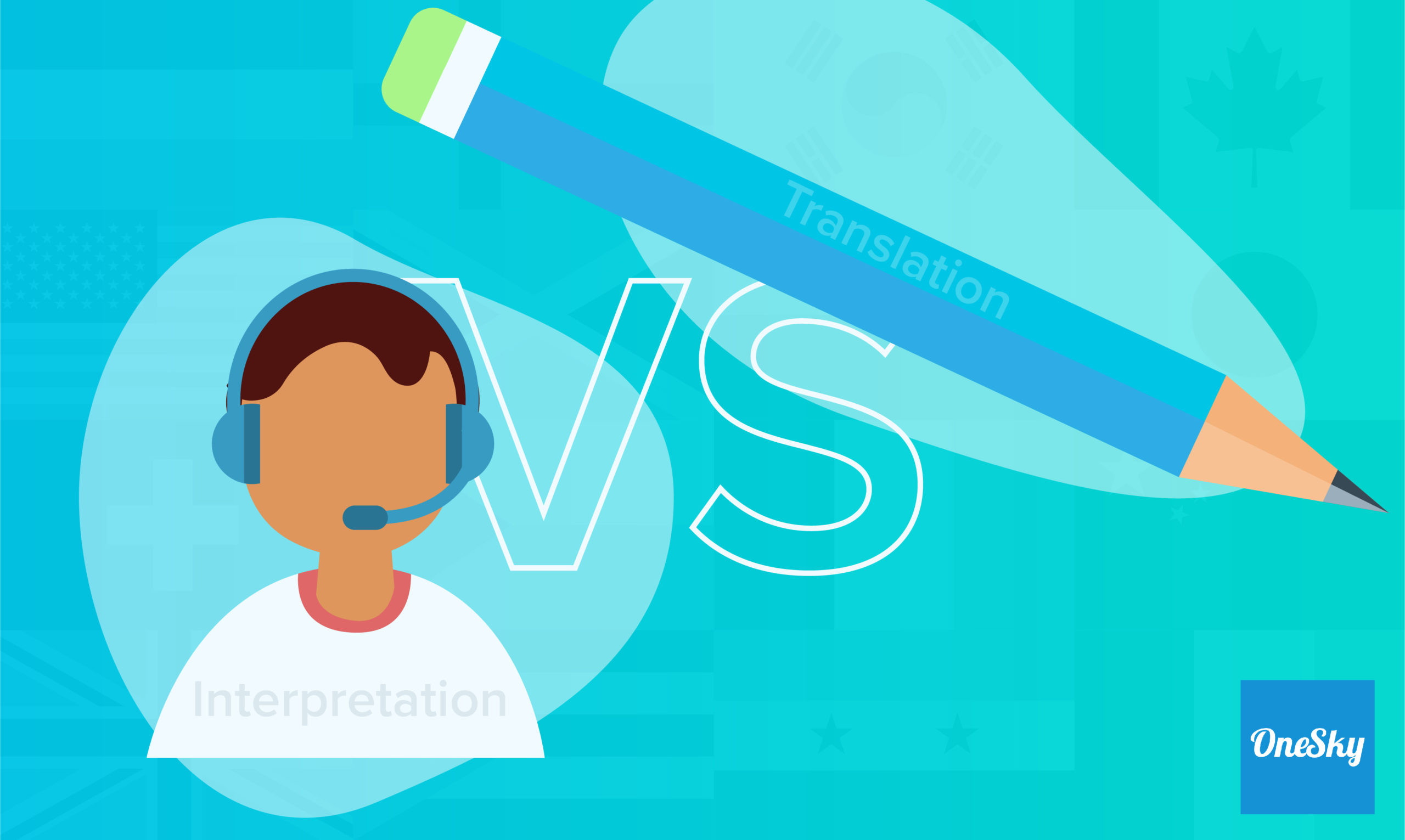Translation vs Interpretation: What Is the Difference?
For any business that wants to operate across borders, working in multiple languages is a necessity. Even if your entire team uses the same language, you still need to talk to suppliers and adapt your marketing for the locals.
There are several different ways to approach this challenge, and countless providers vying for your attention. Figuring out which service you need can feel like navigating a maze.
Two of the most common services you may encounter during your research are translation and interpretation. Both terms are related, but they mean something a little different. To help you find the right option for your business, we have put together a detailed comparison.
Translator vs Interpreter
In everyday speech, “translator” and “interpreter” are used almost interchangeably. However, there is actually a clear distinction between the two roles.

In order to start understanding the differences, let’s take a closer look at each process.
What Is Translation?
In simple terms, translation is the process of converting words or text directly from one language to another. As an example, an article published in Spanish might be translated into German.
When we talk about translation as a service, the term almost always refers to written text. This covers a wide range of media, including:
- Website and software content – online content, in-app content, documentation, support guides, gaming content
- Legal documents– contracts, agreements, employment, acquisition documents
- Financial documents– reports, statements, invoices
- Technical documentation – manuals, guides, standards
- Medical documents– reports, drug information, consent forms, equipment guides
- Marketing content– articles, brochures, social media posts, flyers, slogans, newsletters, presentations
- Certifications– professional certificates, diplomas, court orders
- Literary content – books, essays, poems, scripts
While some translation services cover any project, many choose to specialize in one or two of the fields listed above.
Professional translators need to be fluent in two or more languages, with a strong knowledge of grammar. They regularly use bilingual dictionaries and other reference materials to ensure accuracy, and most utilize computer-aided translation tools to speed up their work.
What Is Interpretation?
The usual meaning of interpretation is the oral reproduction of spoken language. In other words, the job of an interpreter is to take what someone says and deliver the same meaning in another language.
Because interpretation is about listening and speaking, this service is used mainly for conversation and live events. In a business context, example use cases include:
- Meetings– client and buyer, acquisition, merger, governance
- Keynote speaking– presentations, talks, demos
- Press conferences– statements, question-and-answer sessions
- Personal communication – conversations with staff and suppliers
The main skill that every interpreter needs is the ability to transfer ideas between two languages, without pausing for thought. The requirement for accuracy in such a short space of time means that interpreters need to be good under pressure, and they should speak clearly.
Specialist knowledge of the topic under discussion is doubly important in interpretation, as there is no chance to refer to documents and guides.
Translation vs Interpretation: 5 Key Differences
Hopefully, you should be starting to build a clear mental picture of what translation and interpretation look like in the real world. To make the divide even more obvious, here are some key differences to bear in mind.
1) Format
In general, translation only happens in writing. This is because it sometimes requires careful thought and research to make an exact translation into another language.
In contrast, interpretation is almost exclusively oral. Someone speaks in one language, and the interpreter provides the most accurate translation possible in real-time.
Interpreters are the people who sit alongside athletes and politicians as they take questions in a foreign language. You might also see them in the boardroom when multinational deals are being discussed.
2) Speed
When you submit written content for professional translation, you should expect a turnaround time of anything up to a few days. For large projects, translation may take even longer.
Machine translation is almost instant. However, the results are always much less accurate than the work of a human translator. As such, we recommend using automated tools for creating placeholder text rather than for something you wish to publish.
Because interpretation usually takes place during live conversations, it has to be close to instant. Interpreters will listen to part of a sentence at a time, and deliver an approximate translation at the same time.

3) Precision
The purpose of translation is to create an exact copy of written content, but in a different language.
In order to achieve this, translators use CAT (computer-assisted translation) to do the heavy lifting. They will then look through the article to find any areas for improvement. The resulting translation should be a very accurate reflection of the original document.
Absolute precision is less of a priority for interpretation. This is partly down to the time pressure of live conversation. With seconds to translate, an interpreter needs to capture the meaning of what someone is saying — the exact words usually matter less.
4) Flexibility
Every translation job involves moving content from one language to another. This flow is usually in just one direction — such as English to French. For this reason, professional translators are able to specialize in specific source and destination languages.
Given that every spoken conversation is a two-way street, interpretation requires a more flexible approach. Professional interpreters must be able to translate in both directions at lightning speed, without losing any of the sense of what was said.
5) Creativity
While any task that involves writing can be regarded as creative, effective translation should not deviate from the provided source material. It is a task of patient analysis rather than skillful artistry.
In theory, interpretation should also stick rigidly to the words spoken by the source. But making the jump from one language to another is sometimes messy. Many commonly used idioms and turns of phrase would sound laughable if repeated in another language, word for word.
To overcome such issues, a good interpreter needs to come up with a suitable interpretation of every sentence on the spot. This requires a mastery of the destination language, and often a dash of creative flair.
How to Choose the Right Solution
Whether you want to launch a global online store or build a relationship with overseas suppliers, it should be fairly obvious by now whether you need translation or interpretation services.
The question is, which solution should you choose?
How to Choose a Translator
Thanks to the reach of the digital economy, the demand for translation services is huge. It’s a competitive space, where large agencies tend to dominate.
You may come across budget services that employ bilingual members of the public, rather than professional translators. These are best avoided unless you are happy to concede some potentially costly errors.
Among the big players, you will find translation services that cover any kind of project. These solutions often have a team of experts, each working within their own specialism.
In general, however, we would recommend looking for solutions that focus on no more than two or three translation tasks. For instance, this might be legal and financial translations, or websites and software.
The advantage of this approach is that your translators will be better equipped to make an accurate translation, and they will probably need less guidance.
Using a TMS (Translation Management System)
If your translation project involves a website or app, using a TMS (translation management system) is highly advisable. These platforms help your chosen translator to input new translations and add updates.
Many TMS platforms have a feature called translation memory, which stores the translation for every word and phrase in a central database. This allows your translator to recycle previous translations, saving time and money.

How to Choose an Interpreter
When you hire an interpreter, it makes little sense to find the cheapest option. You are relying on this one individual to listen attentively to every word and relay your message accurately.
If either of these parts goes wrong, you can find yourself being misunderstood — or worse.
Take the time to read reviews, and have a conversation with people on your shortlist. Having a good working relationship with your interpreter is essential.
If possible, pick someone who understands your field. As mentioned previously, interpreters don’t have the chance to do research during a conversation. They need to know exactly what the conversation is about with no hesitation.
Build Your Business Across Borders
Both translation and interpretation can be part of a larger localization strategy, aimed at optimizing your business for new markets. If you would like to take that next step up, OneSky can help.
Our end-to-end workflow lets you extract content with ease, and connect with a network of 1,000 professional translators. You can manage the process through a TMS interface, with translation memory and on-device testing built in.
Sound good? Sign up free today to give it a try.



 Written by -
Written by - 




 Written by
Written by 


